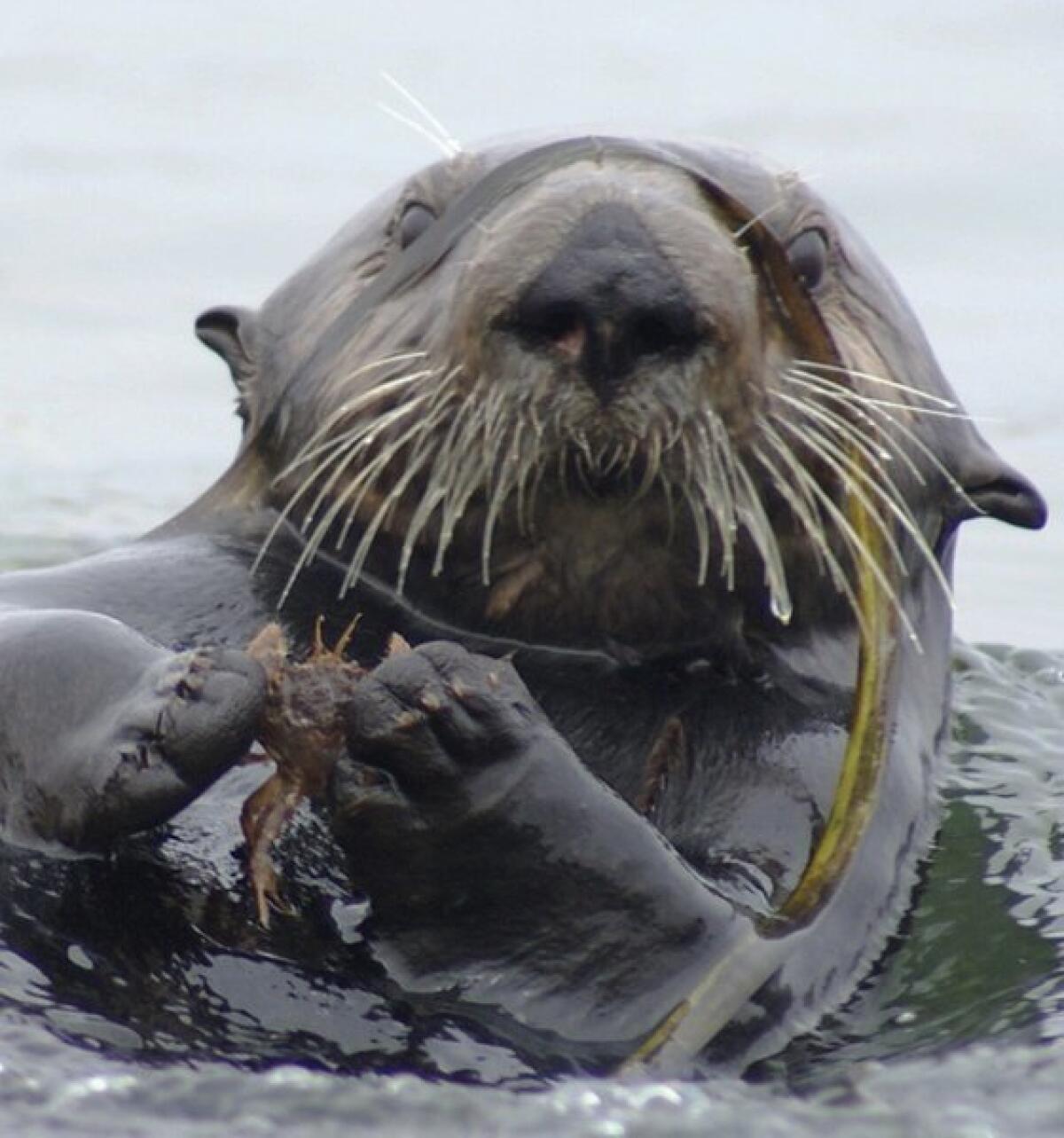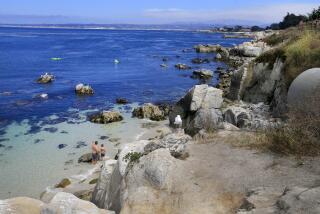Sea otters boost seagrass by protecting algae-eating sea slugs

Fertilizer runoff has led to a global decline in seagrass meadows, which provide crucial habitat for fish. But thanks to sea otters, these meadows are flourishing in Elkhorn Slough, a major estuary in Monterey Bay, scientists say.
Fertilizer from farms in Salinas flows into Elkhorn Slough, carrying phosphates and other nutrients that fuel the growth of algae on seagrass leaves. As the algae blooms, it shades the seagrass from the sunlight it needs to grow.
In fact, nutrient levels are so high in Elkhorn Slough that scientists wouldn’t expect seagrasses to survive there. Yet in recent years the estuary bed has been teeming with the lush, green grass.
“There’s more seagrass in the slough than there’s ever been,” said study leader Brent Hughes, a marine ecologist at UC Santa Cruz.
To find out why, he and his colleagues combed through surveys conducted by the California Department of Fish and Wildlife and other agencies that tracked the growth of seagrass in Elkhorn Slough over the last 50 years. Fertilizer runoff nearly wiped out the seagrasses, but they began expanding in 1984 — right when sea otters began recolonizing Elkhorn Slough, the researchers reported Monday in the Proceedings of the National Academy of Sciences.
Sea otters once thrived along the California coast, but the fur trade nearly drove them to extinction in the early 1900s. Since then, conservation efforts have helped them recover and repopulate their former habitats, including Elkhorn Slough.
Since sea otters returned to the estuary, the seagrass has expanded sevenfold. But how did the otters boost its numbers? The researchers suspected that the otters fed on a predator that affected the plant’s growth.
The only predators sea otters eat are crabs, which feed on invertebrates — such as sea slugs — that nibble algae off seagrass leaves. With fewer crabs to prey on them, these grazers grow more abundant, keeping seagrass leaves clean and healthy.
To test whether crabs really were the missing link, the researchers compared seagrasses in Elkhorn Slough with those in Tomales Bay, an estuary that has a similar ecosystem, but with low levels of nutrient runoff and no otters.
Compared with Tomales Bay, Elkhorn Slough had fewer crabs and more seagrass overall. And in the areas with dense sea otter populations, the seagrass was greener, grew faster, and had less algae.
The researchers also simulated the effects of otters in the ecosystem using enclosures in Elkhorn Slough. One of the enclosures contained the large crabs one would expect to find when otters aren’t around to eat them; the other had the smaller crabs found when otters are present. As expected, the seagrass grew larger and faster in the enclosure with the smaller crabs.
“Every single test we ran gave us the same result,” Hughes said. “It’s almost like sea otters can fight off the harmful effects of nutrient pollution on seagrass.”
Efforts to preserve Elkhorn Slough and other marine habitats have typically focused on reducing nutrient runoff. The new findings suggest that these efforts should also consider the role of large predators such as sea otters, said Benjamin Halpern, a marine ecologist at UC Santa Barbara who wasn’t involved in the study.
“Clearly the management or restoration of these coastal habitats requires attention with what’s happening onshore, but also what’s happening offshore,” he said.
The findings could also offer a glimpse of what to expect now that the U.S. Fish and Wildlife Service has lifted the ban on sea otters in Southern California. The ban was designed to prevent otters from competing with fishermen for abalone and other shellfish. But now that the otters are welcome, “the potential benefit could be huge” for estuaries in the region, Hughes said.
Since the researchers studied only Elkhorn Slough, it’s possible that sea otters could have a different effect on other estuaries, said Brian Silliman, a marine ecologist at Duke University who wasn’t involved in the study either.
“Would this happpen with other habitats?” he said. “That’s what gets me excited.”
Twitter: @mmpandika






